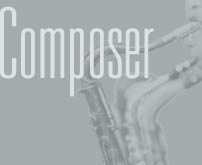|
Copenhagen, September 21, 2010.
Quartertones on the saxophone:
My interest in exploring the possibilities of quartertones on the saxophone draws its inspiration from various sources: Indian classical music, contemporary classical music, "Texas tenor" blues players etc.
Inspiration from Indian classical music:
After my early years studying and playing in New York 1987 to 1989, and after recording my first two albums with players like Jimmy Cobb and Billy Hart, I felt a personal and musical need to find other ways of working with emotions in music. I was very fortunate to spend four winters in New Delhi studying with the great shenei masters Daya Shankar and his farther Anant Lal. They initiated me into the archetypical emotions expressed in the subtle microtones of the Indian ragas, hereby giving me an invaluable new awareness of microtones. My attempt at incorporating ragas into my jazz language can be heard on several tracks with Lars Møller Group (1994-2001).
The blues angle:
While staying in New York, I had the opportunity of listening to and hanging out with legendary Texas tenor player Arnett Cobb. Today, I realize that the intuitive use of microtonal colors in this blues saxophone language carries a great emotional knowledge.
Contemporary classical music:
From 2004 to 2008 I was a member of the Danish Saxophone Quartet. Besides classical music by Bach etc., we often performed compositions by Danish contemporary classical composers (Per Nørgård, Pelle Gudmundsen-Holmgren and others), who use quartertones as part of their compositional language. In particular, I remember a piece by Svend Hvidtfelt Nielsen, which we performed in the summer of 2006 at the Suså Festival for New Music. In the piece, the intervals of a chromatic fugue theme were diminished into quartertones.
Working towards this particular concert, I was given a quartertone fingering-chart by soprano player Jørgen Bove, which I brought with me on a three-month sabbatical with my family and our newborn daughter in Andalusia in Spain (2006). I started to work methodically on the further development of the quartertone fingerings, and I remember that just getting the physical finger technique to work felt like starting to learn how to play all over.
My use quartertones:
In 2006 I was fortunate to receive a three-year work grant from the Danish Art Council. This enabled me to focus on long-term compositional projects (for big band, choir and chamber ensembles) and gave me the time to further develop the quartertone language on the saxophone. The fingering-chart shows the fingerings I have been implementing in my playing. I have not found any fingering for the quartertone between g and g#, that would work on most saxophones (Selmer, etc.). However, on my "Ladyface Conn", there is a G# trill key, that I have adjusted to produce this quartertone.
More specific details about the compositions and the melodic language:
Harmonic language:
Previously, I have composed on the piano within a chordal language that reflects the extended chords and voicings available on the piano.
When I began composing using the quartertone, I adopted a compositional approach using primarily the saxophone, and I realized it would be appropriate with a more open and simple chordal harmonic environment - leaving more space for the small inflections and occasional bluesy feeling of the lines.
The melodic quartertone lines I have been working on fall into various categories:
Adding quartertones to blues and pentatonic lines between major/minor 3rd, 4th - often on top of 7th #9 chords, as exemplified in Fuglsang Blues, Todi World.
Moving 6ths with quartertone between the lower or higher notes of the moving intervals, as utilized in Quarter Tone Aquarium (not yet released) and Fuglsang Blues.
Adding quartertones to a raga:
Todi Worldis based on the North Indian raga Gujari Todi that has these notes: 1, b2, b3, #4, b6, maj 7th. The melody is in the tonality of Eb and superimposed on a B natural bass pedal figure moving to Eb. The C section is more bluesy riff based.
Adding quartertone to a harmonic minor scale between the major 2nd and minor 3rd, between the 5th and b6th and sometimes between all chromatic notes between the minor 3rd and the 5th, as in Minor Mirror.
Abstract intonation: Dividing the octave in eight equal ¾-intervals.
In "The 2nd Never Lies" I divide the octave in four equal parts resulting in a diminished chord. Each of the minor thirds are divided in two equal ¾-intervals, resulting in a very abstract intonation and in lines that seem to have no tonal gravity. In a way like a whole-tone scale - just more "floating". The ¾-tone interval may also be compared to some intervals in Turkish music.
Moving quartertone cells by quartertonesby diminishing chromatic structures. Going outside my natural tendency to have the "real" chromatic notes on the downbeats - as in July Dance.
Using quartertones "inside" a half step. This could be between the root and maj7th in a major chord scale, thereby making it possible to have chord notes on downbeats keeping a rhythmic 8th (or 16th) note flow. I can imagine this would challenge the traditional way of playing bebop 8th-note lines with forward motion - let's see what comes out of that in the future.
Other scales: 7th, half or whole (diminished), augmented; adding ¼-steps to the half step or whole step scale.
|




